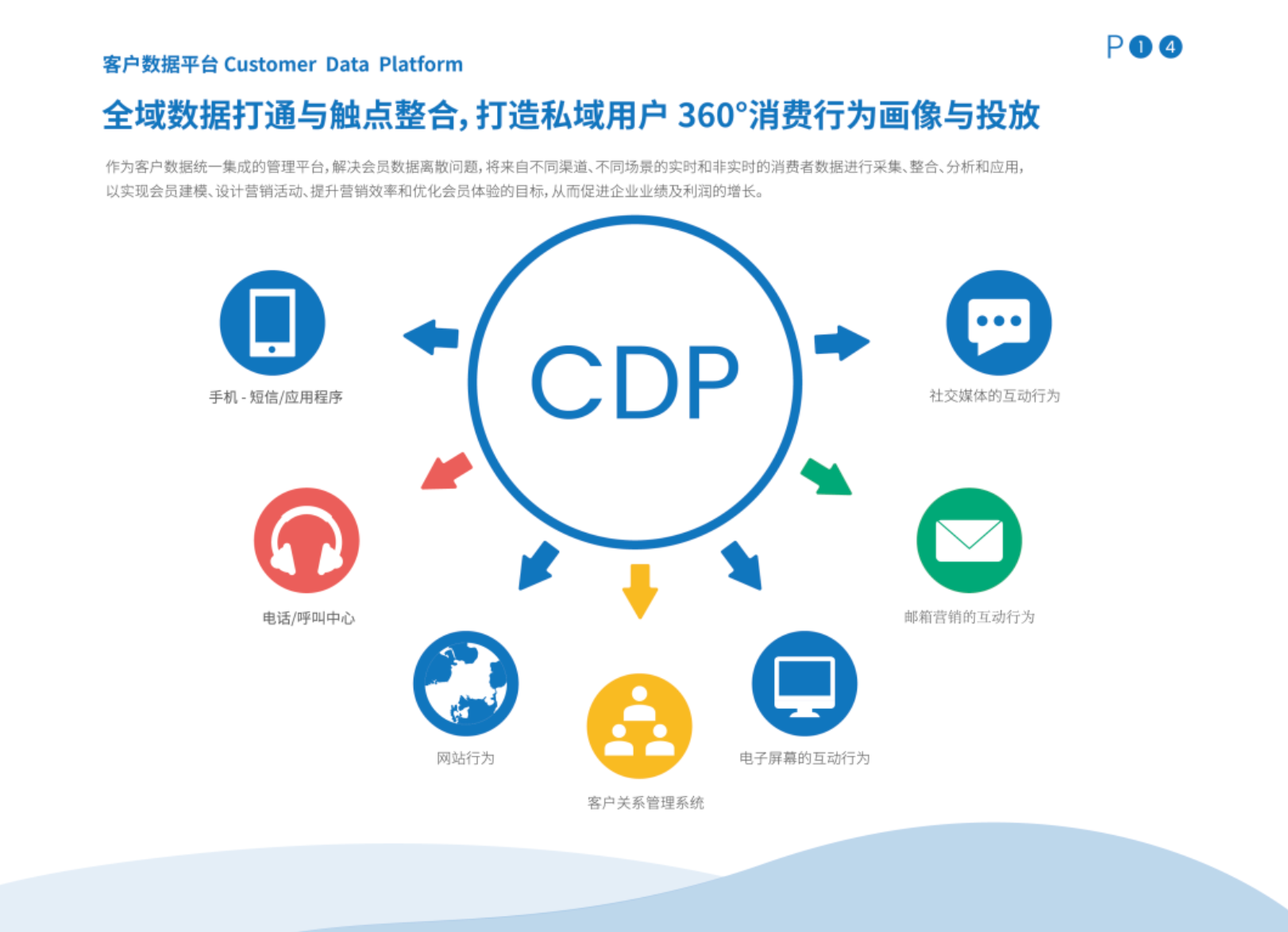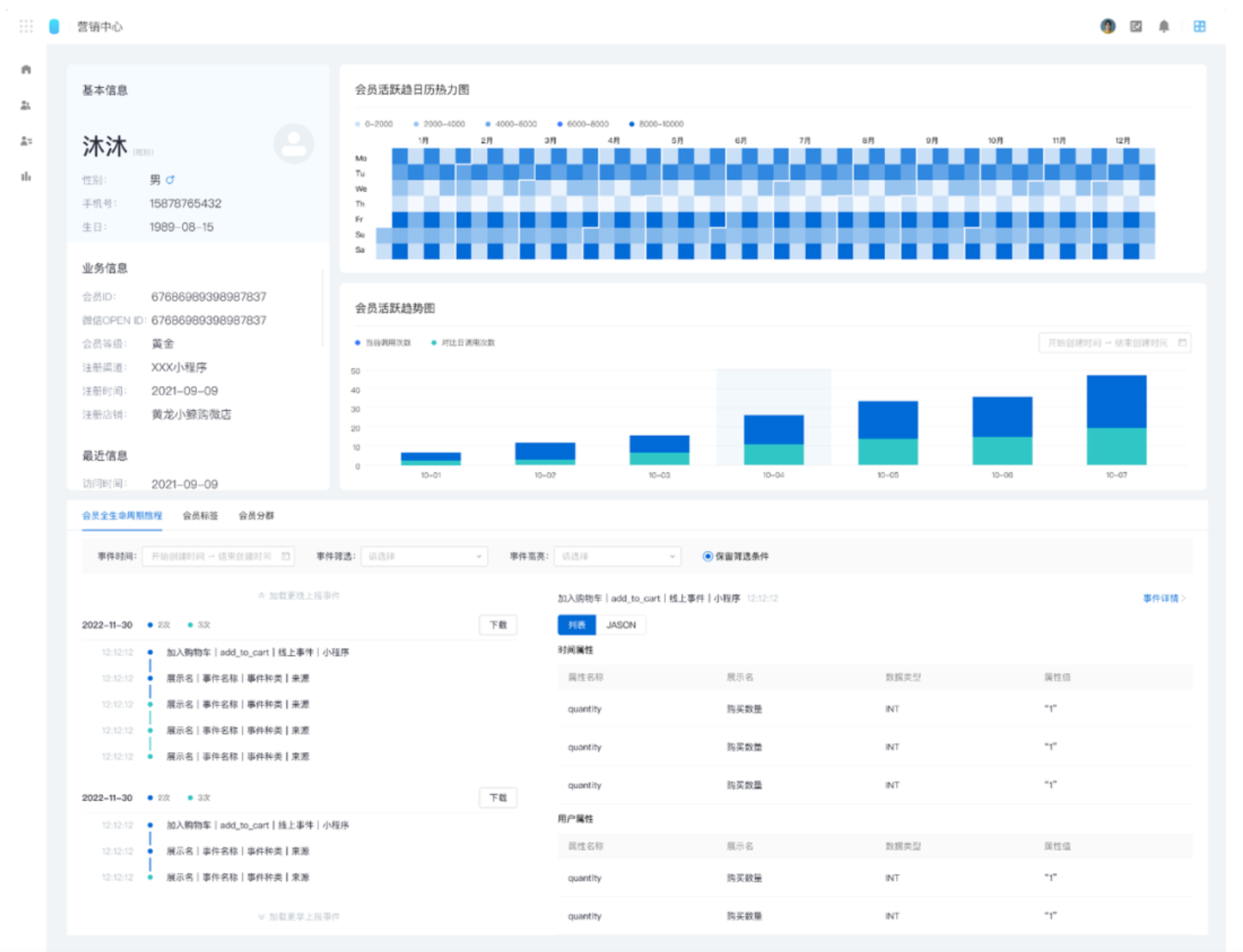Interviews | Whale's product leader Liu Jia: Data-driven decision making, CDP empowers brand marketing operations
01
Merge public and private domain data to be a "piggy bank" for brand data assets
Founded in 2017, Whale's growth has coincided with the rapid expansion of China's digital marketing industry. Liu Jia tells us that Whale's mission is to "Connect Brands with Customers", and that Whale is a company that uses a combination of internet and data models to provide brands with full-domain marketing and operational solutions.
In Liu Jia's mind, a strong technology gene is one of Whale's most distinctive labels. The construction and application of CDP products is an important part of Whale's solution, and Whale, which is doing the next generation CDP around brand, people and field data asset precipitation analysis, has a deep understanding of CDP capabilities.
Currently, there are three types of CDPs in the market, including pure data CDPs that only undertake the role of data aggregation; analytic CDPs that display the aggregated data through BI and let users perform custom analysis; and marketing CDPs that focus on marketing scenarios, have clear ROI and targets, and are closely integrated with business, which is also the type of CDP Whale is working on.
The birth of CDP is closely related to the needs of brand enterprises. To talk about the functions of CDP, we have to start from the development history of CDP. Liu Jia said, in the past, brands did marketing and data asset deposition, first through the public domain for advertising, the return of monitoring data stored in the three-party DMP (data management platform), the formation of the first data assets of the brand.
After that, as the brand gradually matured, the data volume increased and there were higher requirements for data security and richness, so the construction of a DMP was started; the data stored in the DMP was for advertising, but as the brand developed private domains and accumulated membership data, the concept of CDP was born. CDP is like a depository and a reservoir for brands to gather and manage data, and to deposit data assets that can be used repeatedly for brands.

The value of CDP can be seen from the development history of brand enterprise data management model, and Liu Jia summarizes the core value of CDP as three points.
First, it helps brands to aggregate and consolidate scattered data in the early scenario of 0 to 1, which facilitates brands to conduct refined overall management analysis.
Secondly, there are differences in the cognition, understanding and caliber of data scattered in various channels, CDP can help align data indicators, including system and organizational alignment, so that different departments can understand data from the same objective dimension, reduce internal communication costs, improve decision-making efficiency and increase the value of data assets.
Third, the formation of data culture identity within the brand enterprise, under the unified data and unified data understanding, enterprise organizations can complete the acquisition and use of data in a good data base environment, cultivate a good sense of data culture, which is conducive to the long-term development of the brand.
02
Real-time interaction, privacy protection, multi-dimensional analysis, differentiated advantages to help brand operations
CDP is playing an important role in the new era of brand digital marketing chain, so what is the specific operation process? Liu Jia combined with the practice of Whale CDP product, and gave us a detailed explanation. Liu Jia divided the digital marketing chain into six steps, namely ad placement, user attraction, user retention, user activation, traffic fission and conversion, and the product tool matrix of Whale's CDP can connect the marketing links other than ad placement.

Take the case of Whale's marketing service for a new tea brand X as an example. Under the premise of privacy protection, it uses offline queuing data to optimize fulfillment and LBS-based offers in real time, and can adjust the store allocation of X's online orders based on store queuing and online purchase data, as well as encourage users to participate in app games to punch cards or offline purchases to obtain preferential content for user attraction, retention and conversion.
Liu Jia emphasized that in this case, real-time high interactivity is one of the most critical capabilities for CDPs managing user data. Changes in data such as user orders and purchases at the front end have to be aggregated in real time to provide feedback and trigger subsequent changes in order allocation or game progress. This is one of the biggest advantages of Whale CDP product, which has better real-time interactivity and can bring better experience to users.
Another highlight of Whale CDP is the rapid layout of privacy protection, which will be implemented in 2021 with the Data Security Law and the Personal Information Protection Law, which will provide a standardized procedure and system for the collection and use of consumer data, as well as higher requirements for the digital marketing of brands today. For CDPs operating based on user data assets, the changes are huge.
In Liu Jia's view, the impact of data security-related laws and regulations on CDP products is mainly manifested in the acquisition of consumer data. CDP data sources are usually divided into three kinds, first-party data, second-party data and third-party data, and brands in their own channels, authorized by privacy policies and user agreements, can continue to collect data from one party normally, while the second-party data collected by platforms such as e-commerce will be subject to no small restrictions, not only the unique identification of the user is closed, the collection and circulation of data will also have strict requirements, by the data package, the crowd package put back into the flow of third-party data transactions are almost banned.
Under such circumstances, the importance of zero-party data, which is subjectively authorized by users to brands, will become increasingly prominent. In this direction, Whale has also started to work on this early, and its CDP product is the first to integrate a privacy management module to help companies use data more compliantly.
Liu Jia also mentioned that another major advantage of Whale CDP product - the wide range of data dimensions, many of Whale's customers are using an integrated online and offline business model, and the data collection and management of CDP does not only lie in the consumer human dimension, but also considers the operation scene dimension, which can not only connect the user's information, but also through the "field" information, the online and offline operation space can be connected. At the same time, Whale CDP is able to analyze both the "people" and "field" dimensions separately and cross-dimensionally, enhancing the accuracy and richness of data analysis results.

From the current situation, the market potential of CDP is huge, and there is still a lot of space for CDP to upgrade itself and commercial applications.
First, the value of CDP as a data center will be more and more obvious, such as business attributes are getting stronger and stronger, it is not only a data extraction and analysis platform, but also a tool that can help business growth in the closed loop.
Second, the construction of CDP will become more and more affirmative, all brands should have their own CDP, but at present, based on the construction and operation costs, CDP projects still have the problem of long cycle time and unclear revenue, so it is difficult to widely popularize. In the future, the cost of CDP can be reduced through low-cost scenario applications, etc., so that users can feel the value of CDP, which is also the meaning of technological progress.
Third, segmentation, based on the enhancement of business attributes, CDPs in different fields can have different functional focus, such as clothing and FMCG daily categories can have exclusive CDP tools with different functions.
At the end of the interview, Liu Jia said that in the future, Whale will continue to deepen its understanding of the industry and plow deeper into the customer's industry usage scenarios, especially the marketing scenarios, hoping to bring enterprises a better usage experience and truly empower their business operation growth.

















